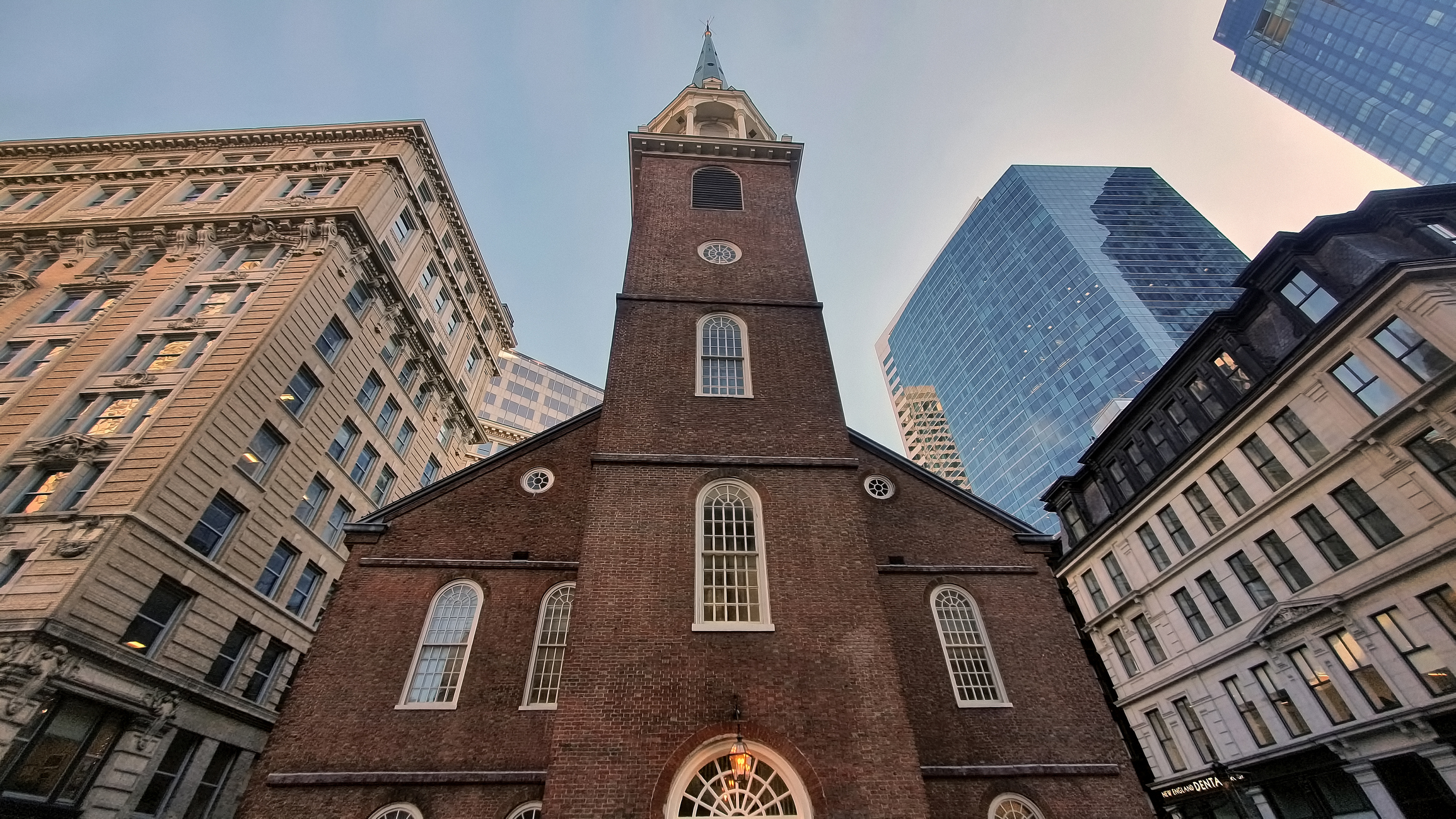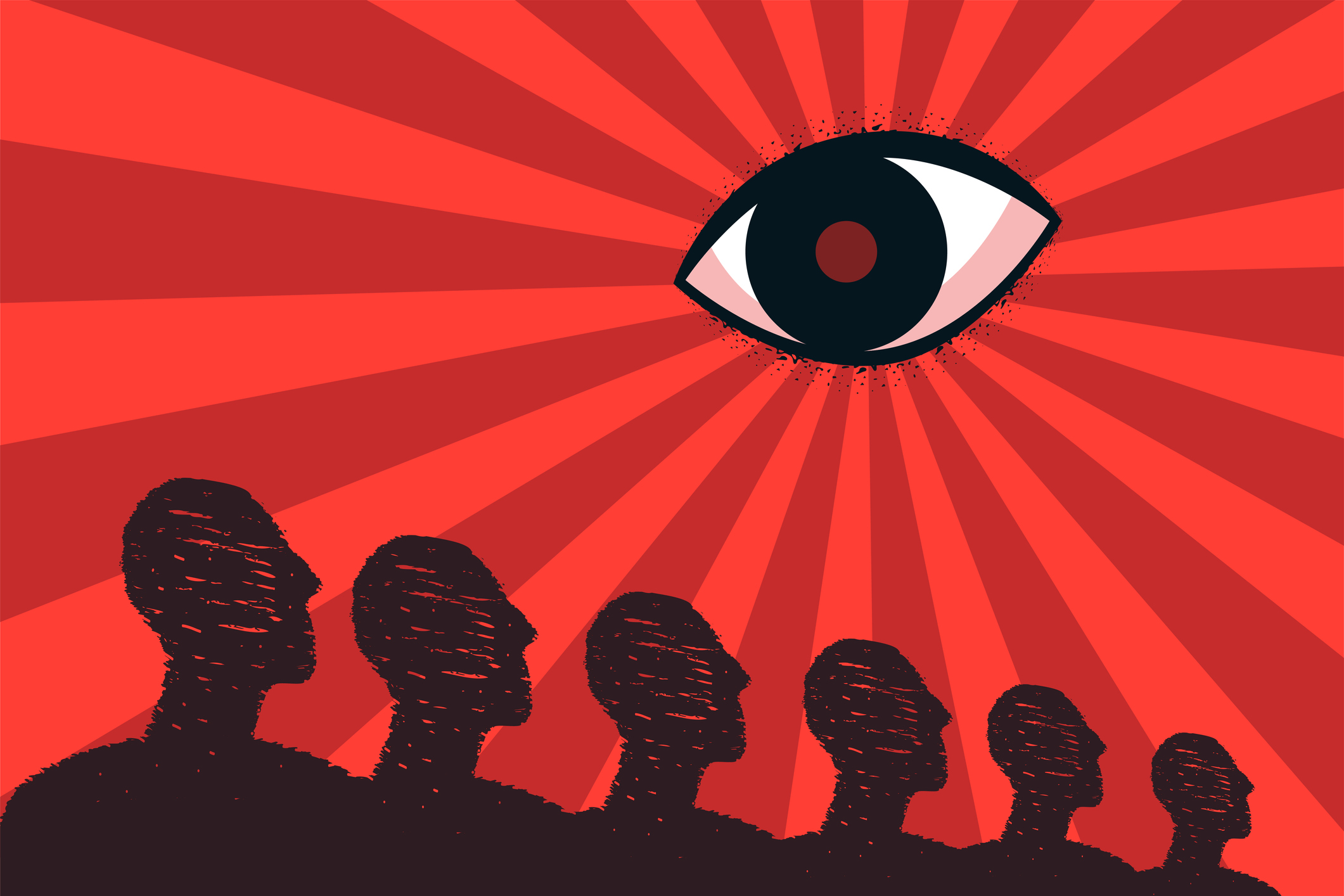Four possible choices to defeat identity politics.
Blaming the Victim

Without Christ, Christianity becomes just another scapegoat ritual.
There are two related trends in right-leaning intellectual circles that deserve our close attention. The first trend is a growing interest in the writings of René Girard. The second is a growing realization that evil exists, that it operates on a spiritual level, and that it has a real hold on our culture. The evidence of this is well-known to readers of The American Mind: Drag queens twerking in schools, the mutilation of immature sexual organs, the initiation of the young into cults of gender theory—these developments and others have compelled many to reconsider, or consider for the first time, the real existence of the demonic in our culture.
Meanwhile, the current fascination with victimhood has prompted a renewed interest in Girard’s theory of the scapegoat mechanism. Notable proponents of Girard on the Right include YouTubeing archbishops and billionaire savants. Perhaps Girard’s newfound appeal is attributable at least in part to his treatment of Satan’s place in the modern world in his famous works The Scapegoat and I See Satan Falling Like Lighting.
In Scapegoat, Girard expands on the notion of mimetic desire—the idea that an individual does not desire an object so much as a mediator whose desire he will emulate. This mimetic kind of desire naturally metamorphoses into mimetic rivalries: if what I desire is what you desire, because you desire it, we will end up in competition with one another over the same plot of land, the same girl, the same job.
This type of rivalry places subject and mediator in conflict with one another. In order to forestall the otherwise inevitable war of all against all, society creates scapegoats. The malevolence of a society is displaced on the selected scapegoat, and they are sacrificed. This immolation is the collective “deep breath” needed for a society to back to productivity. Girard saw this process of mimetic desire and scapegoating as the mechanism driving all merely human cultures.
In the West, the word scapegoat immediately implies the innocence of the victim. We make this reflexive association because of the passion story. For in his death and resurrection, Christ revealed the truth about all scapegoats: that their guilt is a fiction designed to offload the shame of those performing the sacrifice. In Luke 23:34 Jesus, nailed to the cross, cries out: “Father, forgive them, for they do not know what they are doing.” From within the logic of the scapegoat mechanism, what is happening looks like a moral triumph. In reality, seen from God’s perspective, it is evil’s hour of greatest deception.
Girard noticed the Christian story as something truly unique to all of human religious or mythical history. Christ not only establishes salvation in his death, but also reveals just how powerful the innocent victim archetype is. Christ is God, and what can be more powerful than God? Absolutely nothing. Under this logic, some would assume then that the innocent victim wields a great amount of both truth and power.
As Christianity ultimately spread throughout the Western world, establishing itself as the dominating ethos, so too did the notion that scapegoats are innocent, and innocence has power. So long as this notion remained an explicitly religious one, it came along with a sense of mankind’s fallibility and a fear of putting any merely human being in God’s place. Innocence and victimhood were not so regularly conflated with virtue: fear of pride acted as a check on putting human victims in the place of Christ. The imitation of Christ, on the other hand, is a good and prudent exercise: attributes such as love, patience, and mercy are all fitting objects of human emulation.
But in his godhead, Christ displays some attributes which a mortal simply cannot hope to imitate, at least in a fallen world. Seeking to appropriate Christ’s divine nature would have been an obvious sin to our forebears. In our godless age, though, it has become our primary mode of self-deception. We have not gotten rid of Christ, nor have we gotten rid of the Christian structure: we use the same structure, but we fill the roles in the story with human groups and people. The “marginalized” and the “oppressed” become sacred categories, elevated to divine status by their supposedly perpetual victimhood—even as supposed “oppressors,” such as straight, white men, are scapegoated in the most heinous and oblivious fashion. In this way the passion narrative itself becomes a scapegoating mechanism, as disfavored groups are shunted unfairly into the role of perpetual Pilates by a culture that knows not what it does.
The secular veil blinds us from the true nature of the Christian story even as we cannot help but act it out. Those who play the victim become petty, ungrateful, and puerile even as they lay claim to the highest moral authority. Having lost sight of the Christian ethos, they are blind to its real implications—so it becomes a satanic tool in their hands.
The greatest evil that the devil commits is making us believe that we don’t need God because we are God. Satan has been weaving this black thread throughout the centuries, hoping that the contemporary man will mimic the first fall. For us moderns, this means enticing us into a self-aggrandizing hierarchy of victimhood—a black-mass style inversion of the passion story. He encourages us to imitate the divine reality of Christ, and in doing so, he aids us in hoisting ourselves up as gods and goddesses.
In I See Satan, Girard leaves his reader with this sentiment: No matter how vicious and permeating the Devil’s grip is, Christ does always prevail. As we approach Eastertide, we are especially reminded of this. Satan is truly no match for God. But how can we destroy Lucifer’s grip? Identifying the synthesis between the demonic and our modern obsession with victimhood is a part of it. Part of it is aquatinting ourselves with the first things, aquatinting ourselves with great Church Fathers and Christian thinkers. A large part of it is prayer. But one of Girard’s greatest insights is that Christ dispels evil first and foremost by making its reality and its nature manifest. “Everyone who does evil hates the light, and will not come into the light for fear that his evil deeds be exposed” (John 3:20): perhaps one reason for the urgency of Girard’s work is that he enables us, in our hyper-materialist age, to call the powers of darkness for what they are.
The American Mind presents a range of perspectives. Views are writers’ own and do not necessarily represent those of The Claremont Institute.
The American Mind is a publication of the Claremont Institute, a non-profit 501(c)(3) organization, dedicated to restoring the principles of the American Founding to their rightful, preeminent authority in our national life. Interested in supporting our work? Gifts to the Claremont Institute are tax-deductible.
The divide between church and state doesn’t separate religion from public education.
Don't bend the knee to wokeism.
How radical relativism leads to ideological fanaticism.
Conservatism and vampire stories.
Liberal Jews are desperate to maintain the delusion that their major enemies are outside the house.






